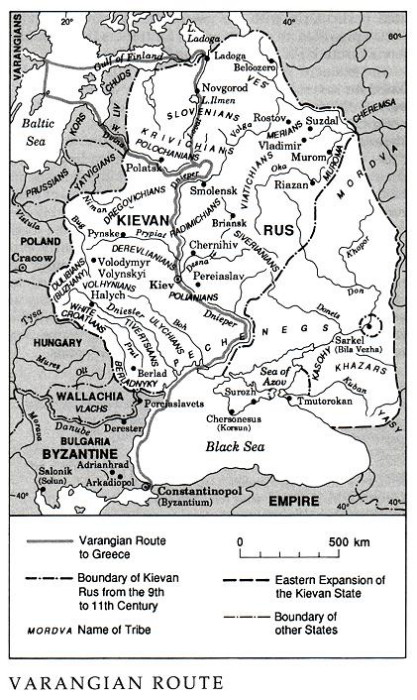Varangian route
Varangian route. A medieval trade route extending from Scandinavia through Kyivan Rus’ to the Byzantine Empire, mentioned in chronicles as the route ‘from the Varangians to the Greeks.’ The trade route consisted of a series of waterways and portages covering nearly 3,000 km from the Baltic (‘Varangian’) Sea to the Black Sea. It began near present-day Stockholm and crossed the Baltic Sea and the Gulf of Finland, followed the Neva River, Lake Ladoga, the Volkhov River, Lake Ilmen, and the Lovat River, and connected with the Dnipro River by way of the Western Dvina River. The route continued all the way along the Dnipro directly to the Black Sea and then followed its western coast to Constantinople.
The Varangian route was first used in the 9th century. It played a major role not only in the development of trade in the Kyivan Rus’ territories but also in the cultural and political transformation of East Slavic tribes into the Rus’ state with its center in Kyiv. Among the cities founded along the Varangian route were Ladoga, Novgorod the Great, Smolensk, Liubech, Vyshhorod, Kyiv, and Kaniv. Voyaging in the southern Ukrainian portion of the route was difficult owing to raids by nomadic tribes in the region, and by the early 12th century an alternate trade route into western Europe was being used that followed the Prypiat River, the Buh River, and the Vistula River. The Varangian route is described in the Primary Chronicle and is mentioned by Constantine VII Porphyrogenitus in his De administrando imperio (948–52).
Arkadii Zhukovsky
[This article originally appeared in the Encyclopedia of Ukraine, vol. 5 (1993).]
